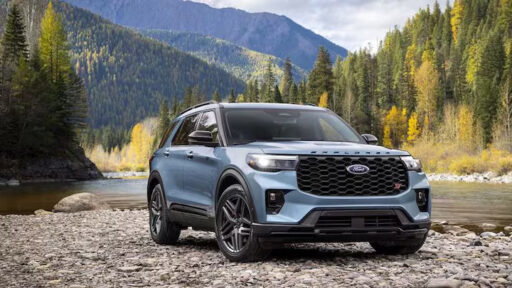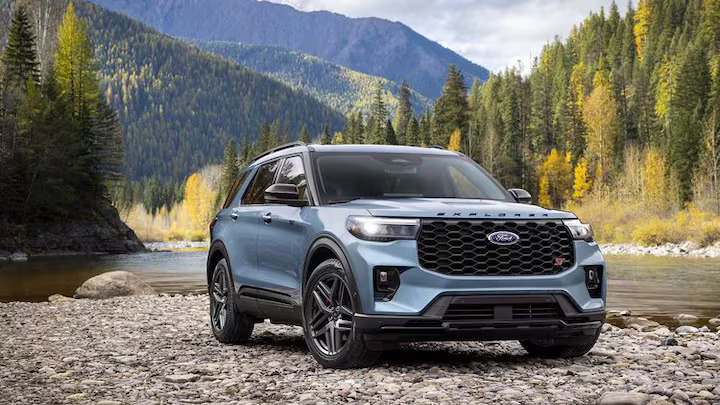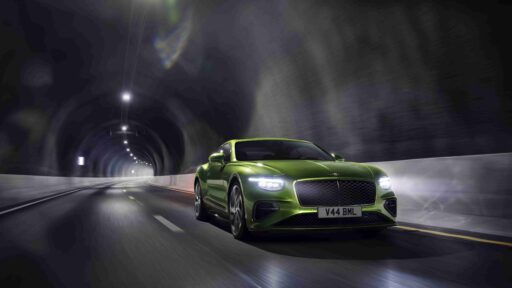In 1990, two iconic releases made a significant impact: Vanilla Ice’s album To the Extreme, which sold over 8 million copies, and the Ford Explorer, which revolutionized the family vehicle market by replacing traditional station wagons. As time passed, those kids from the ’90s grew up, traded Vanilla Ice for Kenny Chesney, and many stuck with the Explorer as their go-to family vehicle, especially after starting their own families. Now in its sixth generation, the Explorer, which debuted in 2019, has had mixed success, struggling to stay competitive among modern SUVs.
Criticized for its cheap interior, lack of refinement, and outdated technology, the Explorer recently ranked last in MotorTrend’s seven-vehicle Big Test and 11th in their Ultimate Car Rankings for three-row SUVs. However, Ford has responded to these criticisms with significant updates in the 2025 model. But the question remains: has Ford done enough to reclaim its place at the top?
READ MORE: Hyundai Unveils IONIQ 5 N, Its First Electric Performance Vehicle, at AutoMobility LA
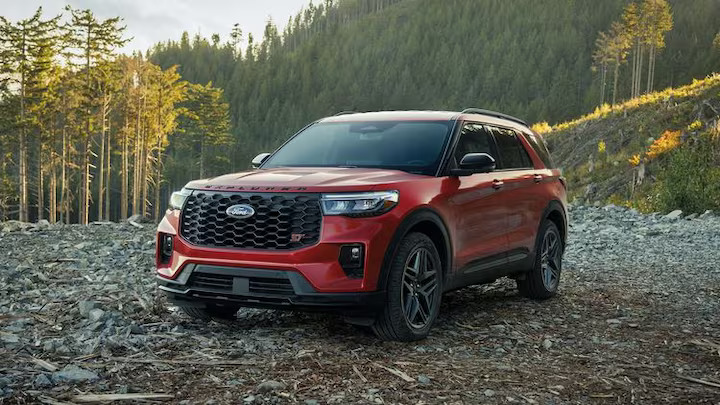
Strengths of the Existing Model
Despite its shortcomings, the sixth-gen Explorer has its merits. It offers ample space, a user-friendly third row, and a visually appealing design. The cargo area is practical, featuring a sizeable underfloor bin and fold-flat second- and third-row seats. Forward visibility from the front seats is commendable, and the sporty ST model delivers an enjoyable driving experience thanks to its responsive steering and robust twin-turbo V-6 engine.
The 400-hp, 415-lb-ft V-6 now stands as the top engine option, with the hybrid powertrain being discontinued. The lineup has been streamlined to four trims: Active, ST-Line, Platinum, and ST. The V-6 is standard on the ST and optional on the Platinum, while the Active and ST-Line trims come with a 2.3-liter turbocharged four-cylinder engine, producing 300 horsepower and 310 lb-ft of torque. Both engines enable the Explorer to tow up to 5,000 pounds and are paired with a smooth and intelligent 10-speed automatic transmission.
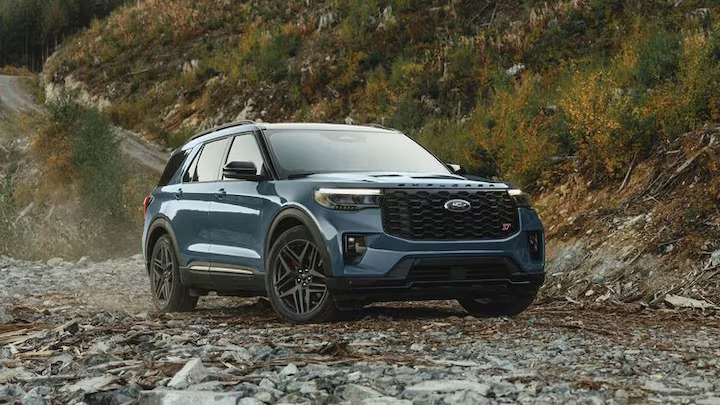
Interior and Technological Improvements
The 2025 Explorer’s interior has been redesigned with more soft materials in key areas, though the third row still features hard plastic armrests. The design draws inspiration from the Maverick compact pickup, incorporating varied textures, colors, and shapes to enhance the overall aesthetic. The addition of hexagonal patterns, a cloth “speaker bar” across the dash, and silver plastic trim with Explorer badging contribute to a more refined look. While some elements, like the second-row fold-down cupholders, still feel cheap, the overall ambience has seen a significant upgrade.
Technological advancements include standard digital panels on all trims: a 12.3-inch driver information display and a 13.2-inch infotainment touchscreen. A new central shelf can accommodate two large smartphones, with wireless charging available in higher trims. The Ford Digital Experience infotainment software, based on Android Automotive, is also featured, offering a customizable suite with numerous apps, including Webex and video streaming services like Prime and Peacock. Additionally, wireless Apple CarPlay and Android Auto are standard.

Enhanced Driving Experience
Ford has addressed the Explorer’s previous driving inconsistencies in the 2025 model. The accelerator is now better calibrated for a family SUV, the brakes are smoother, and the ride quality has improved, even on rough roads. The Explorer is easy to maneuver and park, with accurate and appropriately weighted steering. Multiple drive modes, including Off-Road and Sport, offer meaningful adjustments to the vehicle’s handling, making it capable of tackling various terrains.
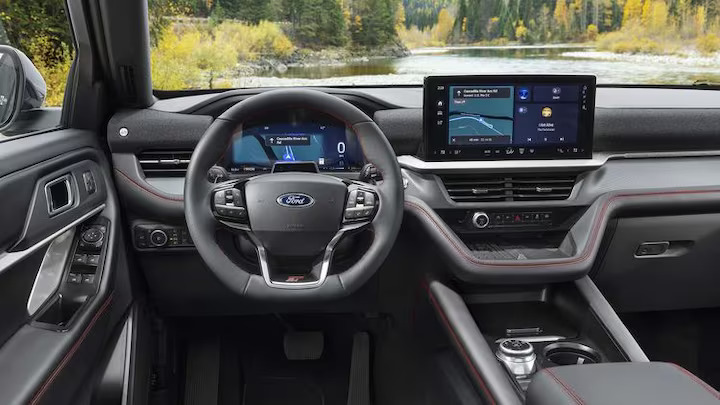
Advanced Driver Assistance and Safety Features
The 2025 Explorer includes Ford’s BlueCruise 1.2, a hands-free highway driving assist available on the ST-Line, Platinum, and ST trims. This system works on 97% of controlled access highways in the U.S. and Canada and now features hands-free lane changes and in-lane repositioning to enhance safety. BlueCruise 1.2 aims to reduce driver fatigue on long journeys, although full automation for lane changes is not yet available.
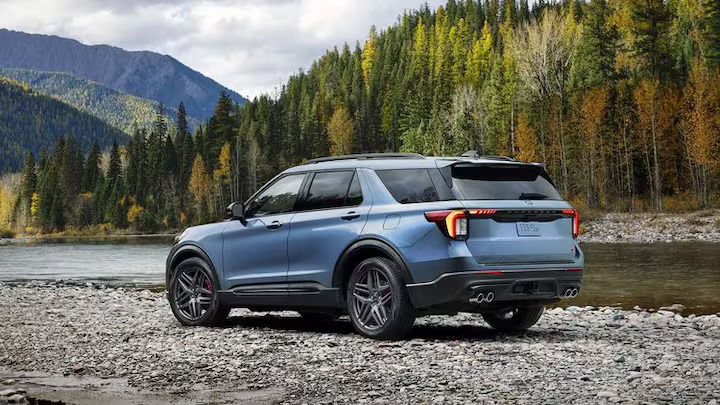
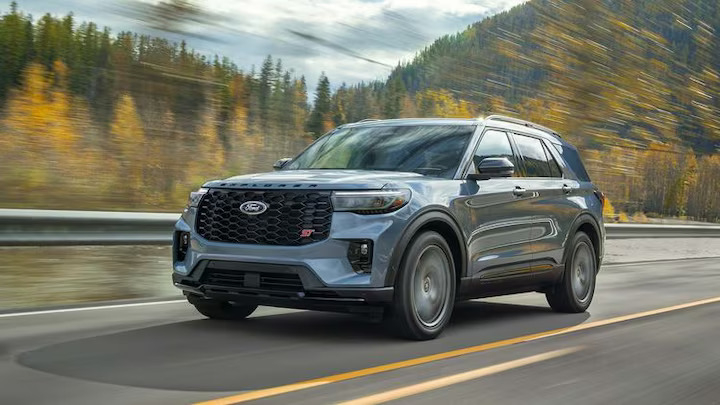
Final Thoughts
While there are still minor issues, such as the effort required to reset the second-row seats and the durability of the cargo area’s tie-down rings, the 2025 Explorer represents a significant improvement. It better aligns with the expectations of the modern SUV segment. Whether it will surpass its competition remains to be seen, but it certainly offers long-time Explorer enthusiasts a reason to remain loyal. For those who remember the days of Vanilla Ice and station wagons, the new Explorer offers a blend of nostalgia and modernity that should satisfy.
2025 Ford Explorer Specifications
- Base Price: $41,350-$57,100
- Layout: Front-engine, RWD or AWD, 6-7-pass, 4-door SUV
- Engines: 2.3L/300 hp/310 lb-ft turbo DOHC 16-valve I-4; 3.0L/400 hp/415 lb-ft twin-turbo DOHC 24-valve V-6
- Transmission: 10-speed auto
- Curb Weight: 4,300–4,650 lb (manufacturer)
- Wheelbase: 119.1 in
- Dimensions (L x W x H): 198.7 x 78.9 x 69.6-70.2 in
- 0–60 MPH: 5.3–6.2 sec (MotorTrend estimate)
- EPA City/Hwy/Combined Fuel Economy: 18-20/25-29/21-24 mpg
- EPA Range, Combined: 424-430 miles
- On Sale: Now
READ MORE: Top EV Charging Spots Around the World: Best Places to Power Your Electric Vehicle
Subscribe today for the freshest car news delivered to your inbox
